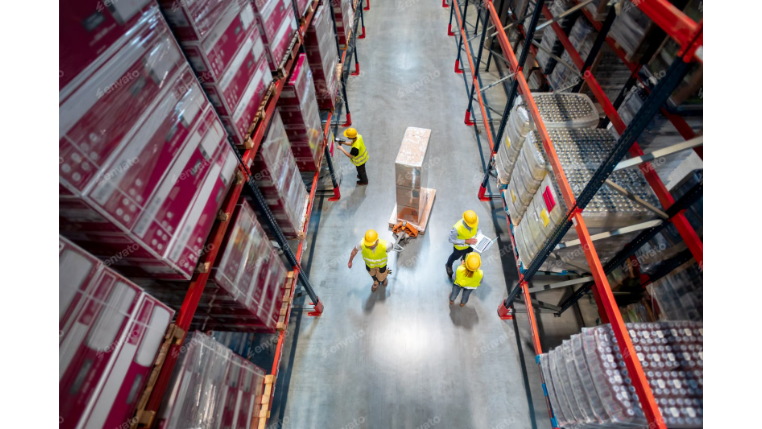DAP vs. DDP: Which Incoterm is Right for Your Shipment?
In international trade, the three-letter codes known as Incoterms are the universal language defining the responsibilities of buyers and sellers. Among the most common yet frequently confused terms are DAP (Delivered at Place) and DDP (Delivered Duty Paid). While they both sound similar, the distinction between them is critical, involving major differences in risk, cost, and customs obligations. This guide will clearly break down the roles of each party under both terms, helping you decide which one is the right strategic fit for your next shipment.
A Quick Refresher: What Are Incoterms?
Published by the International Chamber of Commerce (ICC), Incoterms are a set of globally recognized rules that clarify the tasks, costs, and risks associated with the transportation and delivery of goods. They define precisely where the seller's responsibility ends and the buyer's begins. Using the correct Incoterm prevents misunderstandings and disputes in global transactions.
Understanding DAP (Delivered at Place)
Under the Incoterm DAP (Delivered at Place), the seller is responsible for arranging and paying for the entire transportation of the goods to a named destination agreed upon with the buyer. The seller bears all risks associated with the goods until they arrive at this destination, ready for unloading.
- Seller's Responsibilities:
- Export packaging and formalities.
- Arranging and paying for transportation to the named destination country and place.
- Bearing all risks of loss or damage until the goods arrive at the destination, just before unloading.
- Buyer's Responsibilities:
- Import customs clearance. This is the most crucial point.
- Paying all applicable import duties and taxes (e.g., VAT, GST).
- Arranging and paying for the unloading of the goods from the arriving vehicle.
Essentially, with DAP, the seller gets the goods to the buyer's doorstep, but the buyer is responsible for legally importing them into the country.
Understanding DDP (Delivered Duty Paid)
The Incoterm DDP (Delivered Duty Paid) represents the maximum obligation for the seller and the minimum for the buyer. It is the only Incoterm that requires the seller to handle import customs clearance and pay all associated duties and taxes.
- Seller's Responsibilities:
- Export packaging and formalities.
- Arranging and paying for transportation to the named destination.
- Handling all import customs clearance procedures.
- Paying all import duties and taxes.
- Bearing all risks of loss or damage until the goods are delivered to the destination, ready for unloading.
- Buyer's Responsibilities:
- Simply arranging and paying for the unloading of the goods.
With DDP, the buyer receives the goods with no logistical or customs-related hassles. The price quoted by the seller is an all-inclusive cost to the final destination.
The Key Differences: DAP vs. DDP
The critical distinction between DAP and DDP boils down to one primary area: import customs and taxes.
- Customs Duties and Taxes:
- DAP: The buyer is responsible for all import procedures, duties, and taxes.
- DDP: The seller is responsible for all import procedures, duties, and taxes.
- Risk and Responsibility:
- While the physical risk to the goods transfers at the same point (the named destination before unloading), the customs risk is entirely different. Under DDP, the seller assumes the risk of customs delays or issues, whereas under DAP, that risk falls on the buyer.
- Cost Control and Transparency:
- DAP: The buyer has direct control over the import costs. This can be advantageous for experienced importers who have good relationships with customs brokers and may be able to manage these costs more effectively than the seller.
- DDP: The buyer gets a single, predictable, all-in price. However, the seller will likely embed the cost of duties (and a risk premium) into the final price, which may be higher than what the buyer could have paid themselves.
When to Choose DAP vs. DDP: A Strategic Decision
Choosing the right term depends on the buyer's experience, risk appetite, and relationship with the seller.
You should choose DAP if you (the buyer) are:
- An experienced importer with a reliable customs broker in your country.
- Confident you can handle customs more efficiently or cheaply than the seller.
- Want direct control over import costs and visibility into customs charges.
- Shipping to a country where calculating import duties is complex and best handled locally.
You should choose DDP if you (the buyer) are:
- New to international trade and want a simple, hassle-free experience.
- Looking for a single, landed cost for budgeting purposes, with no surprise fees.
- The seller has a strong logistical presence or subsidiary in your country, making it easy for them to handle imports.
- Convenience is more important than having direct control over customs costs.
Conclusion
In conclusion, the DAP vs. DDP decision is a trade-off between buyer control and seller convenience. DAP empowers the experienced buyer, while DDP provides a seamless, all-inclusive solution for those who prefer to offload logistical responsibilities. Regardless of the Incoterm chosen, maintaining clear visibility over your shipment is essential. Modern logistics platforms like Modaltrans provide the tools to track cargo, manage documentation, and facilitate communication between all parties, ensuring that responsibilities are met smoothly under any trade term.










